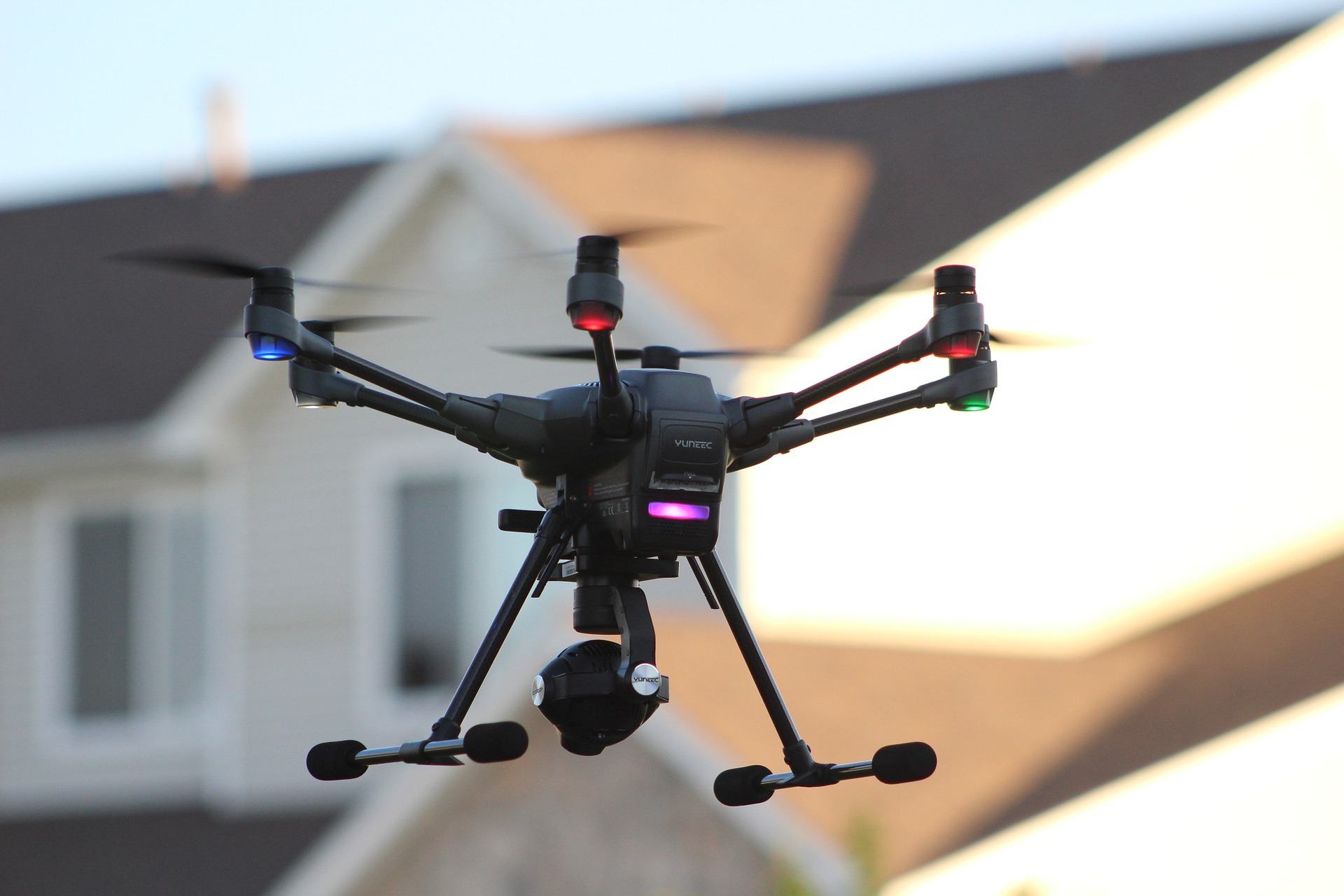
Adding smarts to the edge of a 5G network enables new uses such as performing advanced analytics with the footage from a drone. PHOTO: m_bos from Pixabay
When Singtel executives recently talked up its 5G trials on Sentosa, they were at pains to showcase its biggest selling point – the multi-access edge computing (MEC) support that it is bringing to the table to enable drones, autonomous roadsweeper vehicles and other connected devices.
For the island testbed, Singapore’s government agencies will be able to bring what they have developed on the cloud, from analytics to artificial intelligence (AI), closer to the action.
With these capabilities running on an MEC setup, at the edge of the network, they can remotely control, say, a drone that surveys a building for defects or steer a cleaning vehicle from afar. This is what’s happening with an automated roadsweeper in Sentosa.
Commands are almost instantaneously relayed to the vehicle, because the connection is shorter than, say, one that takes kilometres to reach the nearest cloud data centre. The latency is in single-digit milliseconds instead of the more common double-digit variety.
MEC is the hottest thing now for Singapore telecom operators because the technology is an important piece of the puzzle for 5G to work its magic.
Instead of simply selling the bandwidth or the “dumb pipe”, they can help house the edge hardware in the form of an MEC setup either at a base station, a central office or even customer premise. Here, data is analysed, processed and stored.
A telco’s mobile network is critical to the effort. This opens up new opportunities that includes consultancy and other value-added services to businesses.
It’s not just Singtel that has been selling MEC’s merits. Rivals in Singapore are quick off the mark as well.
StarHub yesterday just said it was working with HP to develop its own MEC solutions, which support the three most popular public cloud providers here – Microsoft Azure, Amazon Web Services and Google Cloud. M1 also offers a similar solution with the three cloud providers.
Now, the applications they support are not new to 5G. Neither is the idea of a more distributed network, where you place storage, compute and other resources near to, say, a mobile base station to take advantage of the low latency offered by the wireless link.
What MEC offers is a standardised, easier deployment. If a business has developed its AI or video analytics on a cloud platform, they can easily bring that over to an MEC setup instead of trying to set up the infrastructure again or find the right tools.
It helps, of course, that cloud providers also have tools that are ready to go. Want to make use of the AI tools on Google Cloud? An MEC may support them. The same for what you can find on AWS and Microsoft Azure.
The other thing about having so much intelligence at the edge is the ability to offload some of the heavy lifting from the remotely controlled devices.
For example, a drone would only need to concentrate on taking the videos and keeping itself in the air. It can be the eyes and ears but the brainpower is at the MEC.
There, instructions will be relayed to the drone to fly in a certain direction or to zoom in on a build defect.
This also brings another benefit – multi-tasking vehicles and devices. With the analytics carried out at the MEC site, a drone that takes high-resolution videos can be used to carry out building surveys one day while taking on the job of crowd monitoring on another day.
After all, the visuals are all it is sending back. The number crunching and sense-making is carried out at the edge of the network, not on the device itself.
This opens up a number of opportunities. A robot, for example, can be set up to welcome guests at the lobby one day, while being used to patrol an area as a security guard on another.
Theoretically, as long as the sensors used are similar, whether this is a camera or a self-driving or flying mechanism, the machine can be reprogrammed for various different tasks.
Of course, much of this promise still has to be fulfilled, first through trials then actual rollouts, which are happening across Singapore.
At Keppel Bay, M1 recently rolled out robots that helped patrol and monitor the marina, as a force multiplier for human security guards. It remains to be seen if such deployments will become more common.
Then there is the issue of security, of course. By having the MEC closer to its mobile network, telcos will be rightly concerned that it is still firewalled and separate from its core setup.
The last thing they want is a cyberattack made possible through a poor configuration on the MEC, which then spreads to the rest of the network.
All said, though, the innovation at the edge looks certain to be a game changer.
It can bring 5G’s promise of low latency and massive connectivity closer to reality. Done right, it might even elevate telcos from mere dumb pipe providers.






